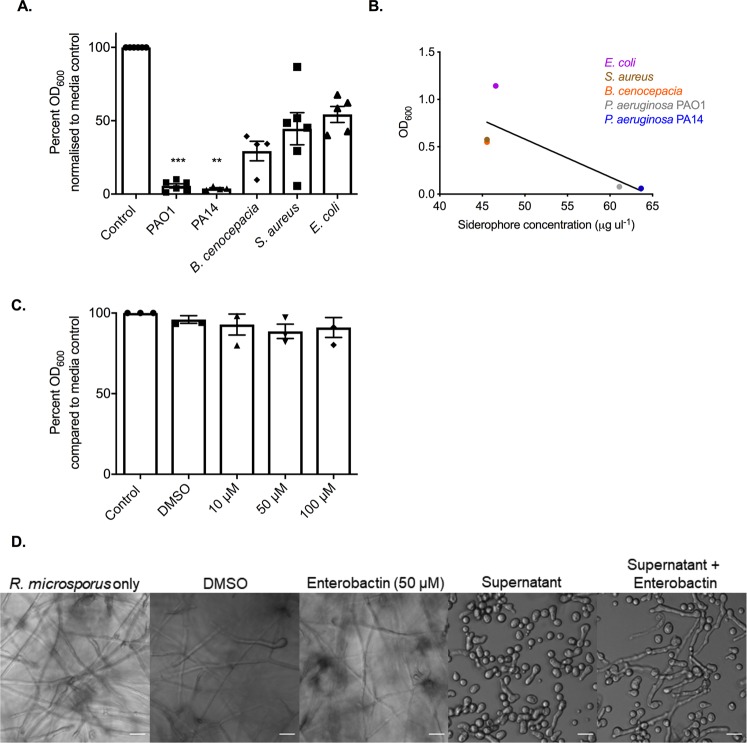Figure 6.
R. microsporus can utilise enterobactin as a xenosiderophore. (A) R. microsporus spores were exposed to 50% supernatants harvested from P. aeruginosa PAO1, P. aeruginosa PA14, B. cenocepacia, S. aureus, and E. coli for 24 h. Fungal growth was determined by absorbance (OD600) and normalised to control. (n = 6). (B) Concentration of siderophores produced by bacteria was determined by using the Siderotec Assay (EmerginBio). Correlation between total siderophore production and fungal growth was determined by performing a linear regression with Pearson correlation (n = 3). (C) R. microsporus spores were exposed to varying concentrations of purified enterobactin for 24 h at 37 °C (n = 3). Fungal growth was determined by absorbance (OD600) and normalised to control. (D) Enterobactin was added to PAO1 sterile supernatants diluted 50% with SAB to a final concentration of 50 μM and incubated at 37 °C for 24 h. Scale bar represents 20 μm. All data was analysed by a Kruskal-Wallis test with Dunn’s multiple comparisons test unless indicated otherwise. *p < 0.05, **p < 0.01, ***p < 0.001.

